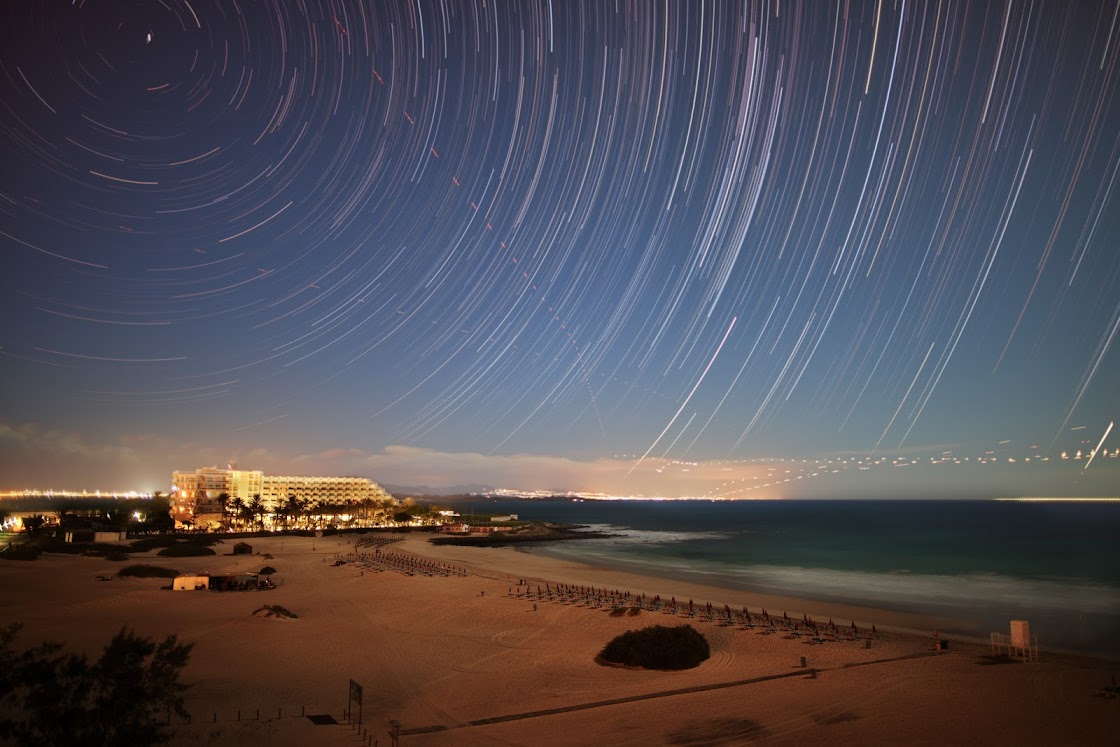 |
| This is example of technique described in this tutorial - long exposure photograph taken at sunset on Fuerteventura. |

First of all I would like to thank for all the positive feedback I'm recently receiving on my tutorials/tips/photos here, on Facebook, Google+ and by e-mail. It's really kind of you and keeps me motivate. I would also really appreciate it if you could maybe share the links to your favourite tutorials/photos with your friends or colleagues - the more readers this blog will have, the more motivated I will be (read:
the more tutorials I will write :) ).
Today I would like to share my ideas on creating a smooth water effect. If you're into landscape photography you're probably familiar with photos where water looks very smooth, silky or like fog. If you're not I'm posting one such a photo with this post.
Although many people claim that such photos are
photoshopped in fact they aren't (or at least in most cases they aren't). They are created mostly in the camera with skill and patience.
Equipment
Basically it is a photography technique that requires very little work in post (although I will write a few words about that too). You will need:
- camera that allows setting bulb exposure (by this I mean exposures longer than 30 seconds) - this technique requires shooting exposures that long,
- steady tripod - because of very long exposures,
- release shutter release (or Magic Lantern if you use Canon DSLR) - same as above,
- neutral density filter - I'm using grey filter because it's neutral (i.e. it doesn't change colours). You can also experiment with colour density filters for achieving particular look. Neutral density filter basically stops some light from reaching the sensor,
- gradual neutral density filter (optional).
Location
First of all, as always scan your location before taking any photos. The reason for this is that it's easiest to get good results either just before sunrise or just after sunset when it's quite dark (it's easier to get longer exposures during that time of day). Looking for a location when it's dark is rather risky and also you might miss the best places.
Try to find a place where there are some interesting rocks (or bridge, or jetty) which will serve as a foreground element. Another good idea is to shoot during the high-tide. The sea is more rough during it, there are some water splashes. Basically there is a lot of movement so it will be easier to
blur it using a long exposure.
Taking a shot
The key to achieving smooth water effect, as I already mentioned, is using a long exposure. In a photo above I used 100 seconds exposure. Despite the fact the sea was really rough with a lot of waves and billows the image appears as very calm and silent. That's how the long exposure works in this case - it blurs the waves by smoothing their motion. So depending on the waves you might need to set your exposure from 30 seconds to something around 120. Sometimes shorter exposures will do, sometimes longer will be necessary. It really depends on the conditions.
Of course using such a long exposure even in a dim light will result in a blown out photo. That's why neutral density filter is necessary. Depending on the conditions and effect you want to achieve you might choose different strength of the filter. For the above photo I used ND400 (which is a 9 stop filter) but on the other day when I was shooting even earlier before sunrise I was using ND8 (3 stops of light). Even when using filter you will need to shoot with the lowest ISO possible and some small aperture (I used f/22).
Also during sunrise and sunset the sky is usually much brighter than the water surface. Even when using small aperture, low ISO and neutral density filter the sky might still turn out blown-out. You can approach this problem in two different ways:
- take at least two exposures: one exposed for the sky and one for the water and then either merge them manually or do an HDR out of them in Photomatix Pro.
- use gradual density filter to compensate for the difference in brightness between the sky and water. This is what I did in the photo above (although the other day I was taking a few exposures).
Post-processing
As I mentioned this effect doesn't require much work in post. Normally I do increase saturation a little bit, play a bit with contrast and sharpen it.
There is one more thing which is sometimes worth doing. If, despite using long exposure, you still have small waves visible in your picture you might try deceasing contrast in the water area. The easiest thing to achieve this is to add local adjustment in Lightroom or Adobe Camera Raw, paint over water area and decrease Clarity and/or Contrast. This should smooth the water a little bit. You might also use curves adjustment layer in Photoshop to achieve the same effect.













































